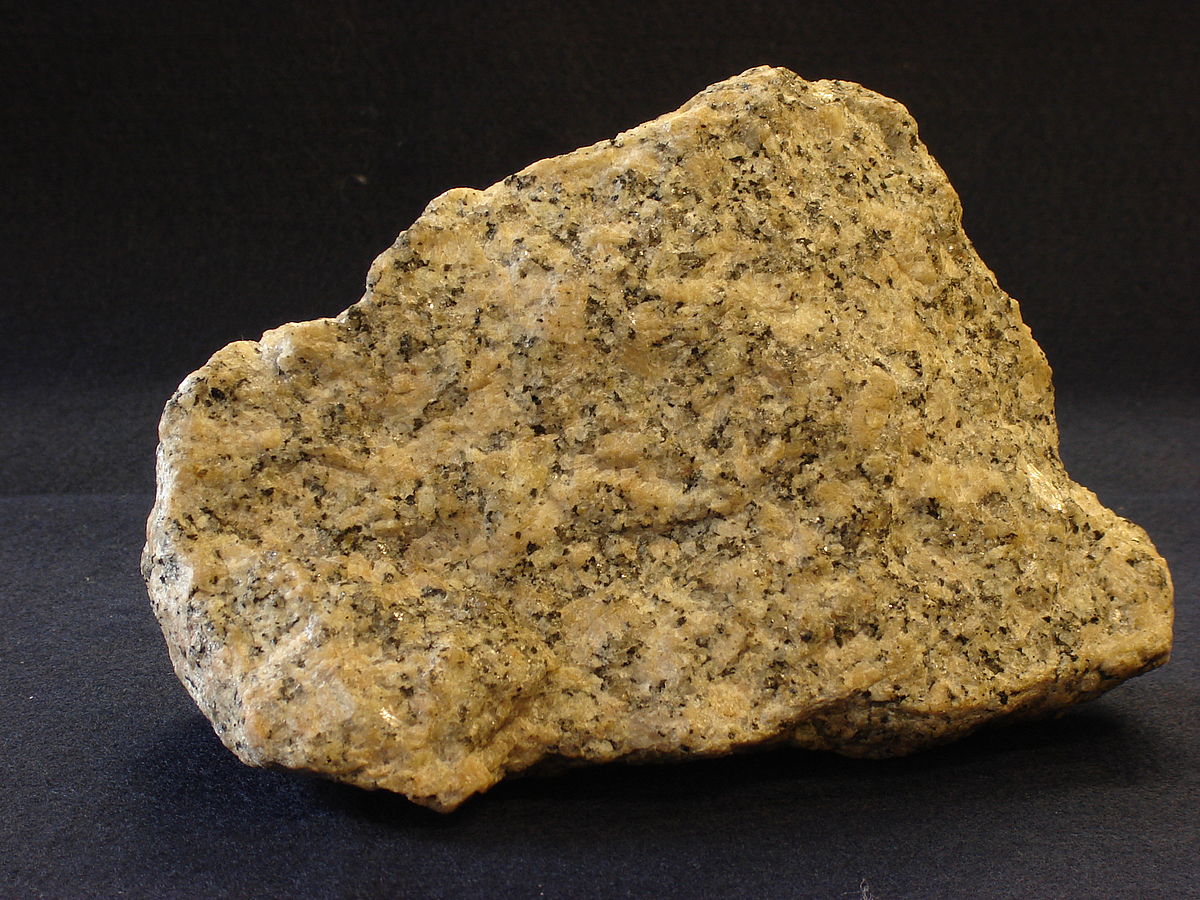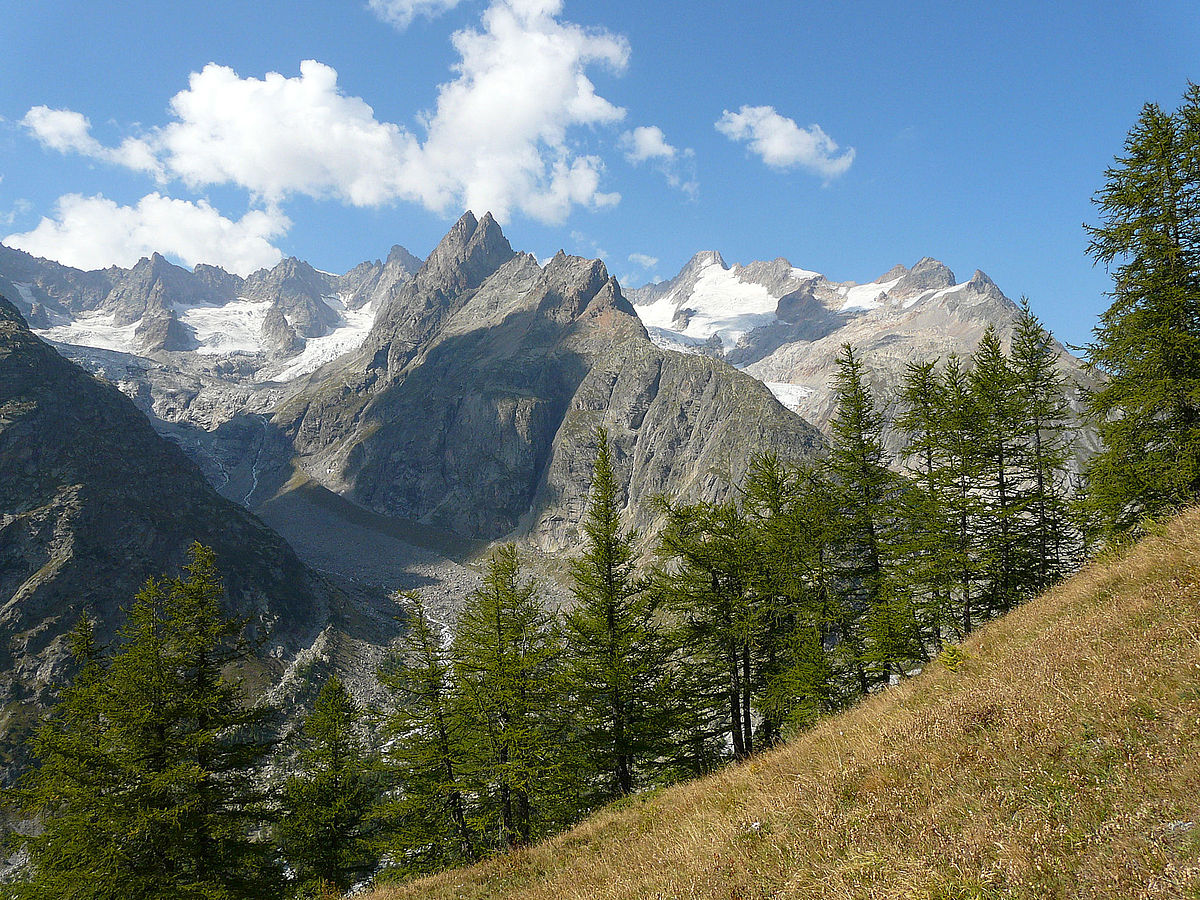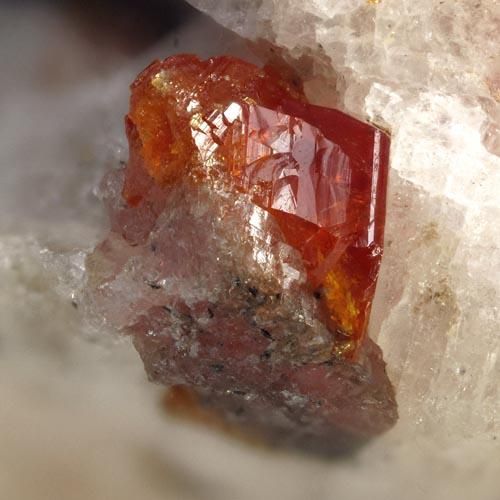Mineralogy of the Aosta Valley - Italy
Valle d'Aosta is a typical alpine region where the presence of minerals is quite frequent and diversified.
Some deposits (especially the iron of Cogne, made up of high purity magnetite) in the past have had considerable economic importance.
In addition, mines of manganese (Praborna), gold (Brusson ), of lead argentiferous (Courmayeur) and of asbestos (Emarese).
Among the collectible minerals we remember the precious crystals of quartz of Mont Blanc and the splendid crystallizations of granite, vesuvian and epidote of Bellecombe, near Chatillion.
There are two main mineralogical localities in the Aosta Valley: the Miage glacier and that of the Triolet .
What can you find in the Miage glacier?
 (Miage)
(Miage)
the Miage glacier with its moraines , is one of the most interesting alpine mineralogical areas.
Located on the Italian side of Mont Blanc, in a splendid landscape, it can be easily reached from Courmayeur along the road that crosses the Val Veny.
The research is mainly carried out in the boulders that cover the glacier, forming the superficial moraine; these boulders are always renewed by the constant movement of the glacier which carries them towards the valley.
The nature of the rocks is variable: to the fragments of an intrusive rock similar to granite and typical of Mont Blanc, called ' protogynous ', we associate metamorphic rocks dye, such as gneisses and micascists, and rocks with a dark green or greyish color, called ' amphibolites '.
 protogynous (Eurico Zimbres)
protogynous (Eurico Zimbres)
What about the Triolet glacier
 Triolet (Christian)
Triolet (Christian)
the Triolet glacier, also in the Mont Blanc group, is a well-known mineralogical location.
It can be reached from Courmayeur climbing up to the Dalmazzi refuge.
The research area extends for a couple of kilometers along the so-called Vallone del Triolet and is mainly made up of blocks and fragments of granite rocks , largely deriving from a huge landslide that affected the area in the early eighteenth century.
what kind of minerals?
The complex geology of the area has favored the formation of about a hundred different mineralogical species, including unique in the world! Like the tiragalloite , saneroite palenzonaite, medaite, gravegliaite.
 Tiragalloite
Tiragalloite
The braunite is the most common mineral: it is found in compact and granular masses, heavy, black, metallic and shiny.
The quartz is also a frequent species, both in compact form and in distinct crystals, very often hyaline, and so is calcite.
 Braunite (Robert M. Lavinsky)
Braunite (Robert M. Lavinsky)